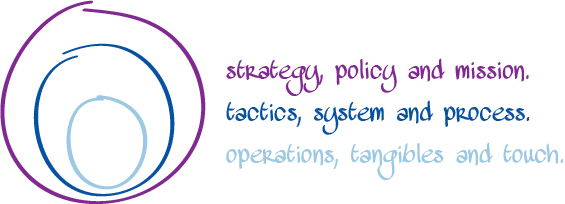Article summary
Design is a loaded word. It means something different depending who you talk to. For example, design in the context of an innovation services firm (like Atomic Object) means something entirely different than design at an ad agency.
Unfortunately for many, lack of understanding for what design is and what it can do for products, goods and services traps them in a monotonous rut of lack luster performance.
Nailing down a universally agreed upon definition of design is challenging, but I think this is a good place to start:
“design: (noun) a specification of an object, manifested by an agent, intended to accomplish goals, in a particular environment, using a set of primitive components, satisfying a set of requirements, subject to constraints.”
http://en.wikipedia.org/wiki/Design
Yes, that’s a mouth full. Illustrated, it looks like this:

GOOD Design asks:
What is the problem we’re trying to solve?
Who are we solving this problem for?
What are the constraints?
Pretty broad definition. Hence the confusion and misunderstanding around the D word.
It’s helpful to break it down a little further.
Design functions at 3 levels: Strategy, Process, and Tangibles.

Design @ Strategy
Design serves to connect the strategic, policy and mission agendas.
Design @ Process
Design serves to connect teams, process and systems of specific business units.
Design @ Tangible
Design manifests itself in the physical, tangible, services and experiences that a customer (user) would interact with and touch.
Source: Sean Blair
By now, the lights are coming on for some of you. Design is critically important.
Job titles don’t often include the word “Designer” at the strategic and process levels. At the tangible level there is a wide range of titles, from Creative Director to Graphic Designer.
At Atomic, some of the best Strategic and Process Designers aren’t Tangible Designers at all! To be clear, this shouldn’t be viewed as a progression of value in the design food chain. Each level of design expertise is critically dependent on the other. It should also be noted that designers at the tangible level are quite often not interested or qualified to execute at the strategic and process level.
As Shawn recently posted, design isn’t art or even a mystery. It’s a lot of hard work, but there is a process that good designers use that helps clarify, manage and measure their efforts.
Design ABCs
Breathe In
Set aside your assumptions and take in something new, and not a new spreadsheet or marketing report. Good design starts by understanding who we’re solving the problem for – which means getting out of the office (in most cases) and getting close to our customers, with one objective – to learn. Not to impose our assumptions or our intuition, but to learn from them – first hand.
Synthesis
Identify patterns and anomalies. Smash your qualitative and quantitative data together and identify gaps, opportunities and bloat. Be prepared to see things that hurt and make you uncomfortable. Don’t flinch if you realize you haven’t even been asking the right questions and you need to get back in front of your customers again.
Brainstorm
Based on your new insights, begin asking how you might solve the problem. Push boundaries, wonder aloud, be specific, don’t be too specific, don’t over analyze, question constraints, have fun, and for heaven’s sake, don’t form a committee.
Prototype
Give your ideas a glimmer of hope. Risk more. Risk longer. Give new ideas a chance to prove themselves. Iterate on what works, and don’t be afraid to fail.
Be prepared, at any stage, to loop back and begin again.
Next Steps
Now that you have a fuller understanding of what design is, I’m sure you can see bits of “design” in the work you do, day-in and day-out. Your title may not have “Designer” in it, but, if you’re solving real people’s problems, under specific constraints, you design.
In my own vocabulary I often use “Big D Design” to distinguish Strategy and Process from the Tangible, where I often use “Visual Design” to describe the craft. I’ve found this helpful in communicating the value of design to stakeholders and clients, as well as gaining a shared understanding of the D word.
Design is the heartbeat of innovation.
Kedron is a recent graduate of Ferris State University, receiving an MBA Certificate in Design and Innovation Management.

[…] Mr. Blauvelt expressed his discontent with the design community touting the idea that they are problem solvers, noting that everyone solves problems, not just designers. Personal commentary: I believe this is a naive understanding of design and the designer. Design is fundomentally about solving a problem, but more importantly, its about solving a problem in a delightful way for someone else. For more on that, read “Understand Design or Fail.” […]
[…] how I was taken in and mentored by a professor-turned entrepreneur. I told him how we incorporated design and design thinking into our software process, realizing that our customers needed successful, delightful products […]
[…] dropped, we need to ask ourselves: are we talking about visual design? User experience? Markup? Tangible design? Tactical design? Strategic design? Or simply […]